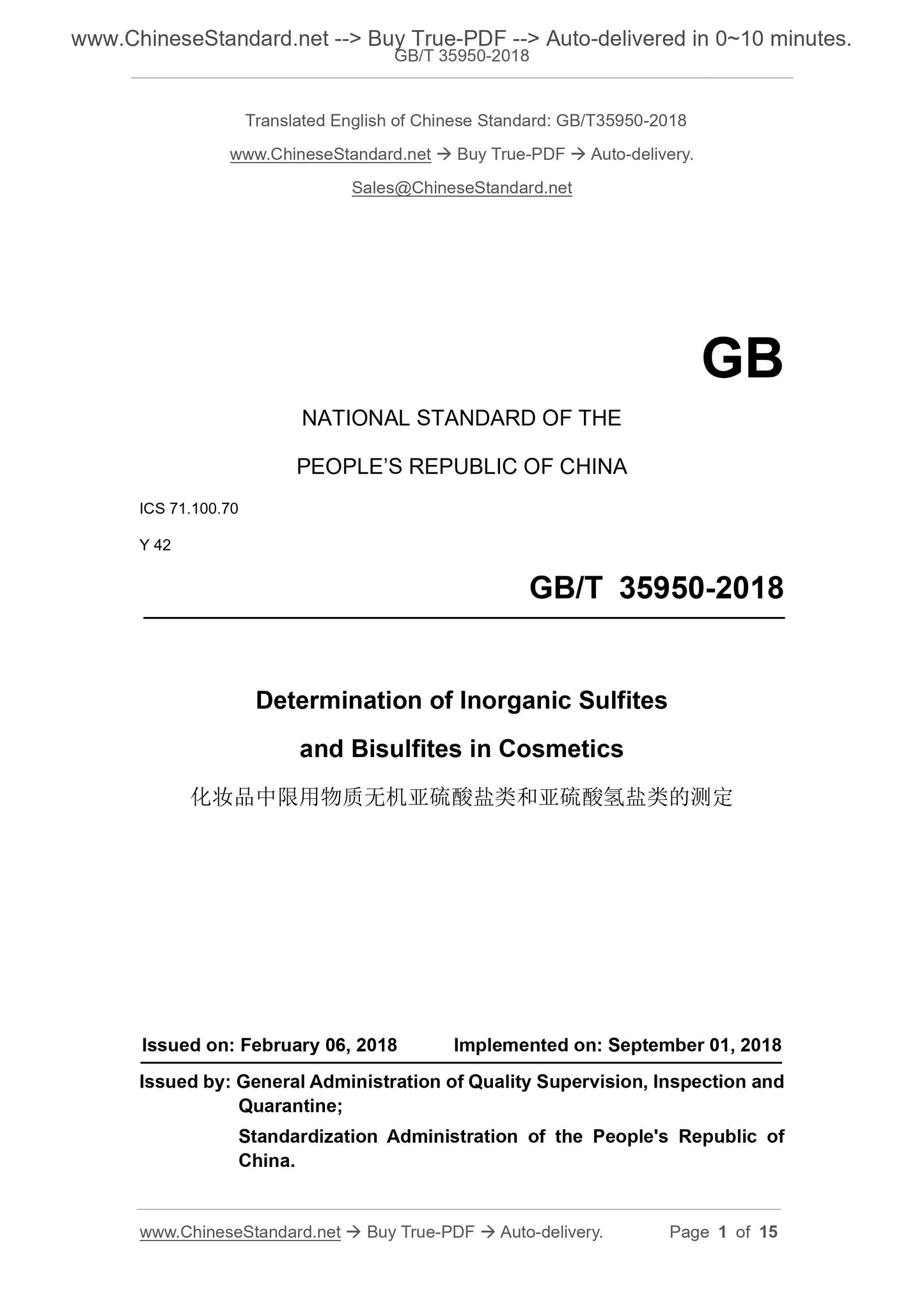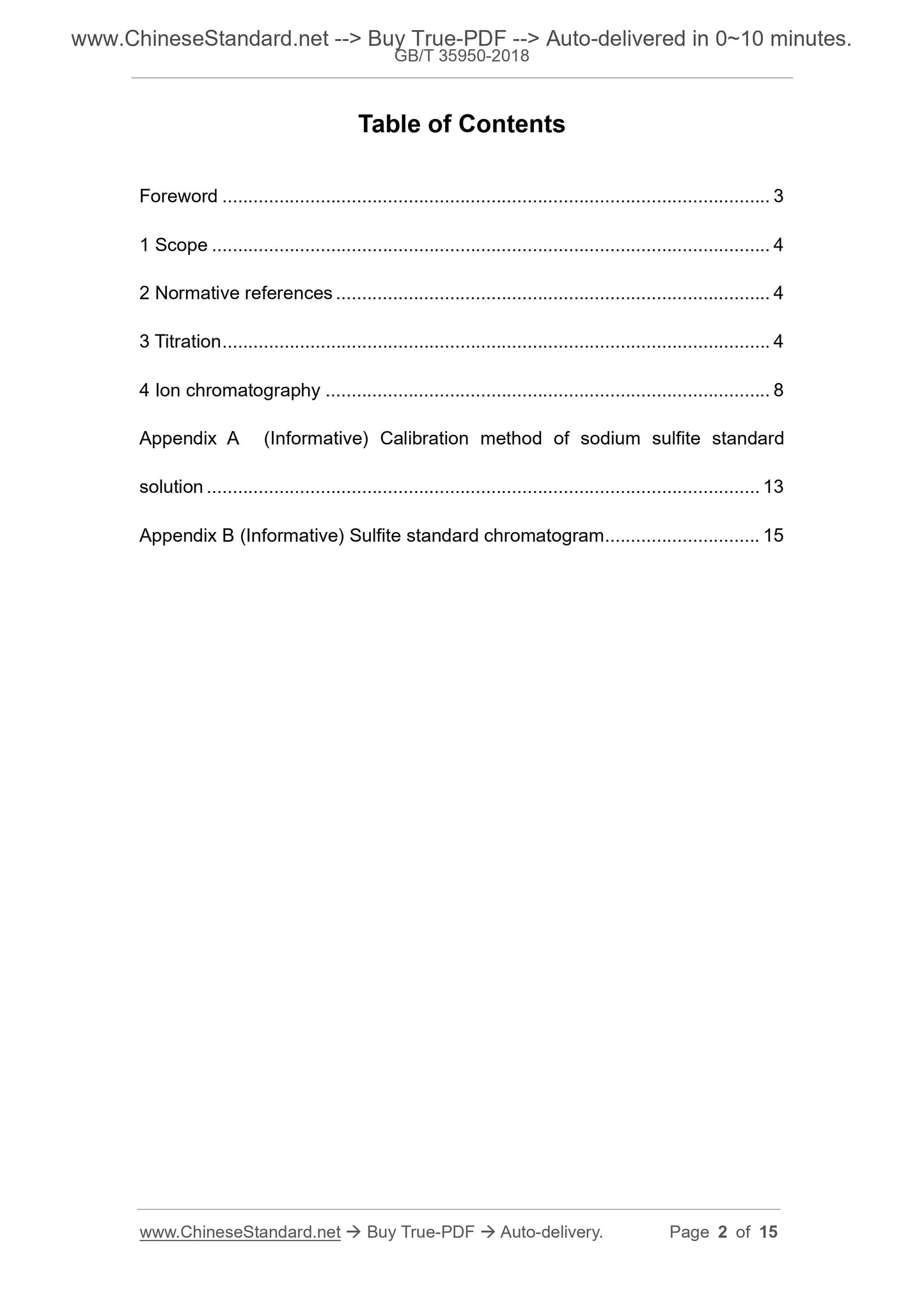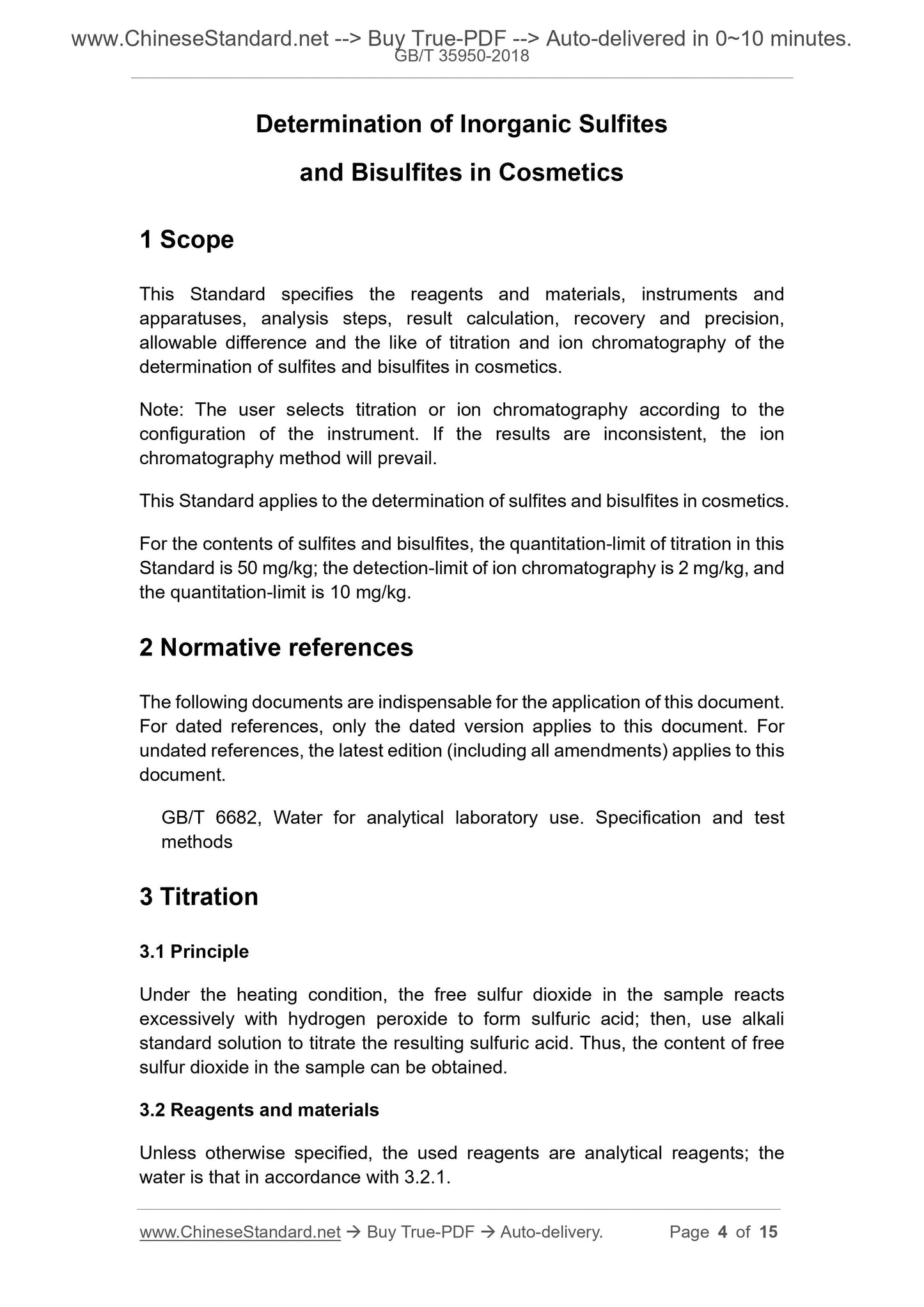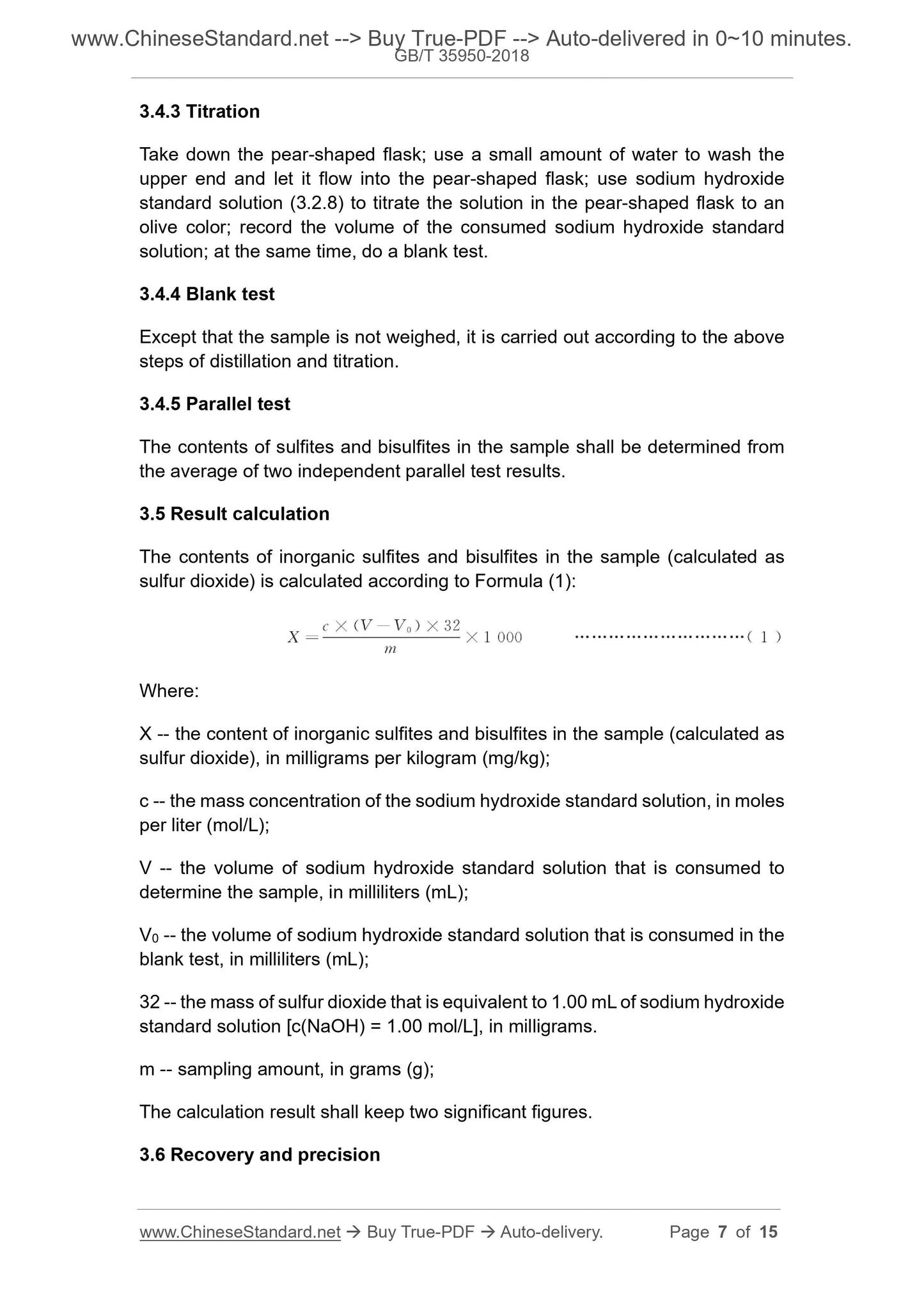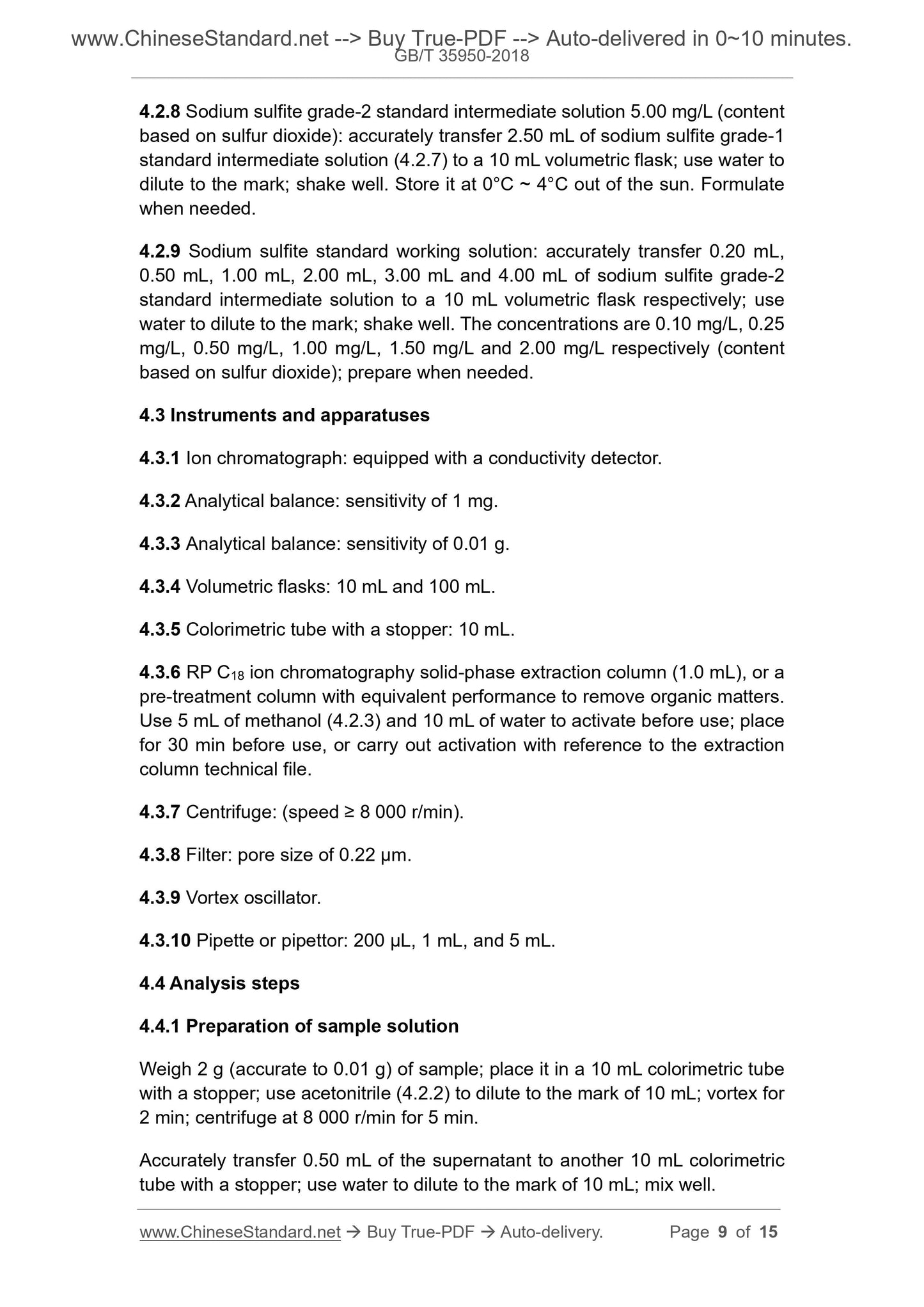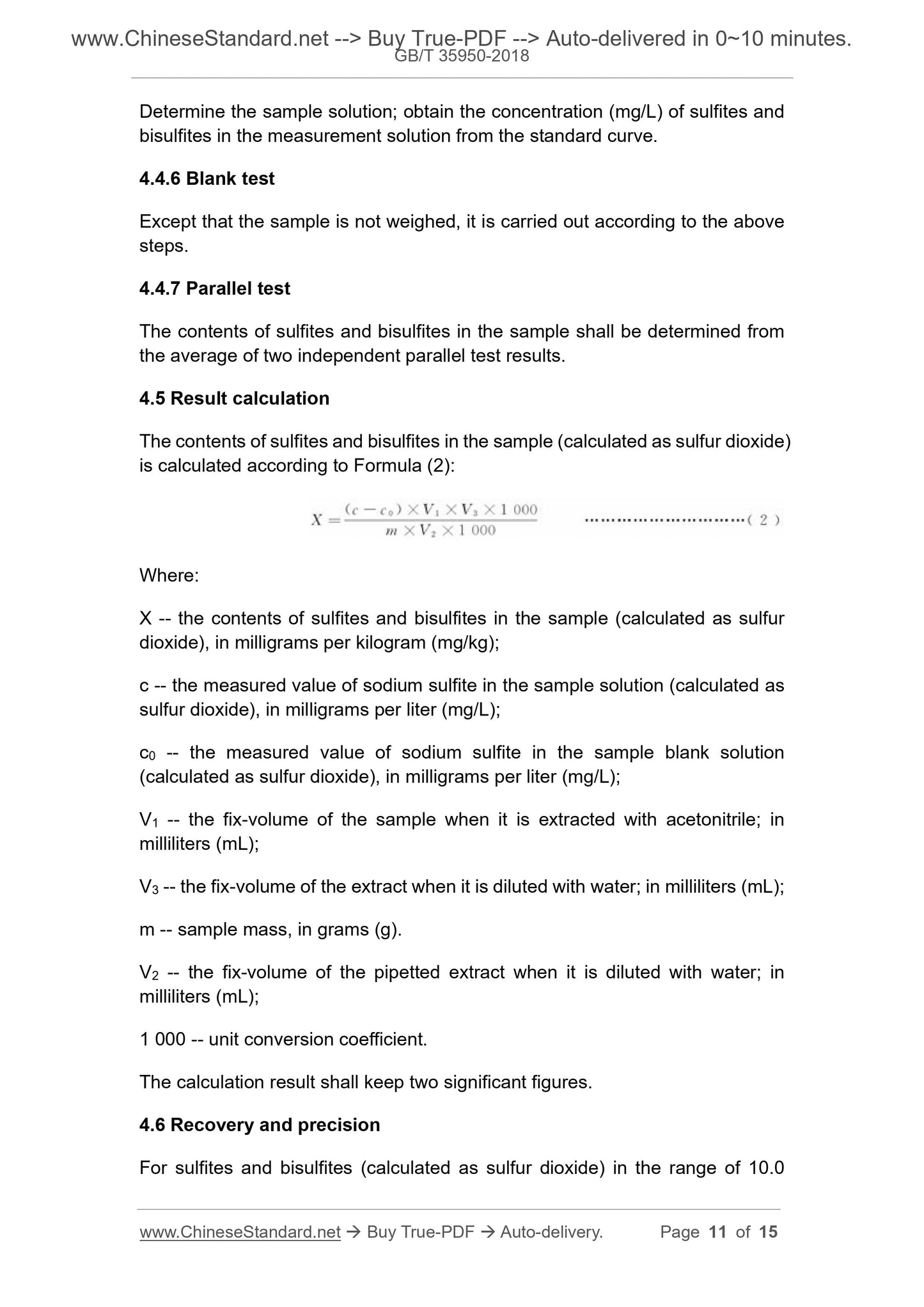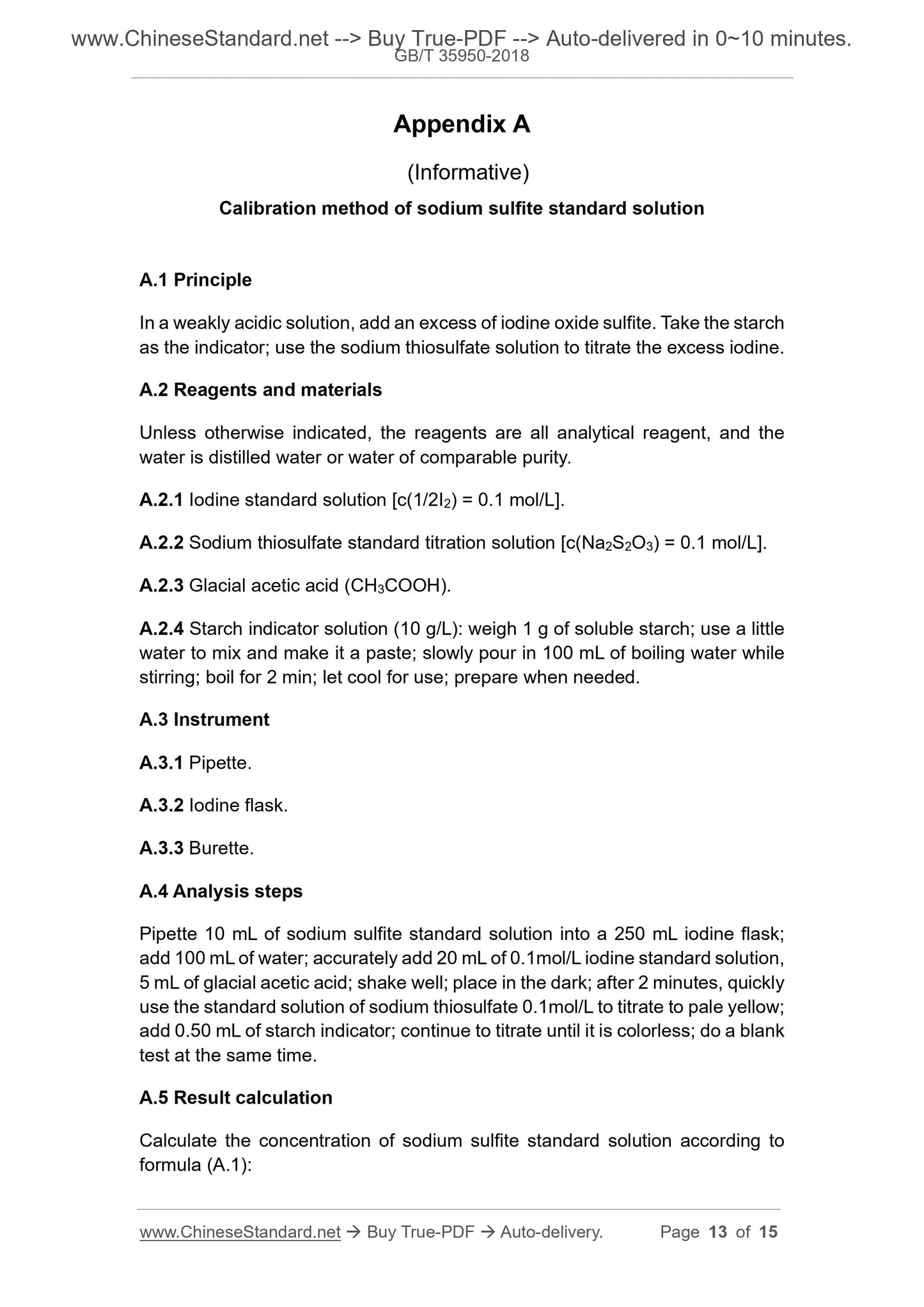1
/
of
7
www.ChineseStandard.us -- Field Test Asia Pte. Ltd.
GB/T 35950-2018 English PDF (GB/T35950-2018)
GB/T 35950-2018 English PDF (GB/T35950-2018)
Regular price
$150.00
Regular price
Sale price
$150.00
Unit price
/
per
Shipping calculated at checkout.
Couldn't load pickup availability
GB/T 35950-2018: Determination of Inorganic Sulfites and Bisulfites in Cosmetics
Delivery: 9 seconds. Download (and Email) true-PDF + Invoice.Get Quotation: Click GB/T 35950-2018 (Self-service in 1-minute)
Newer / historical versions: GB/T 35950-2018
Preview True-PDF
Scope
This Standard specifies the reagents and materials, instruments andapparatuses, analysis steps, result calculation, recovery and precision,
allowable difference and the like of titration and ion chromatography of the
determination of sulfites and bisulfites in cosmetics.
Note: The user selects titration or ion chromatography according to the
configuration of the instrument. If the results are inconsistent, the ion
chromatography method will prevail.
This Standard applies to the determination of sulfites and bisulfites in cosmetics.
For the contents of sulfites and bisulfites, the quantitation-limit of titration in this
Standard is 50 mg/kg; the detection-limit of ion chromatography is 2 mg/kg, and
the quantitation-limit is 10 mg/kg.
Basic Data
| Standard ID | GB/T 35950-2018 (GB/T35950-2018) |
| Description (Translated English) | Determination of Inorganic Sulfites and Bisulfites in Cosmetics |
| Sector / Industry | National Standard (Recommended) |
| Classification of Chinese Standard | Y42 |
| Classification of International Standard | 71.100.70 |
| Word Count Estimation | 10,148 |
| Date of Issue | 2018-02-06 |
| Date of Implementation | 2018-09-01 |
| Issuing agency(ies) | State Administration for Market Regulation, China National Standardization Administration |
Share
